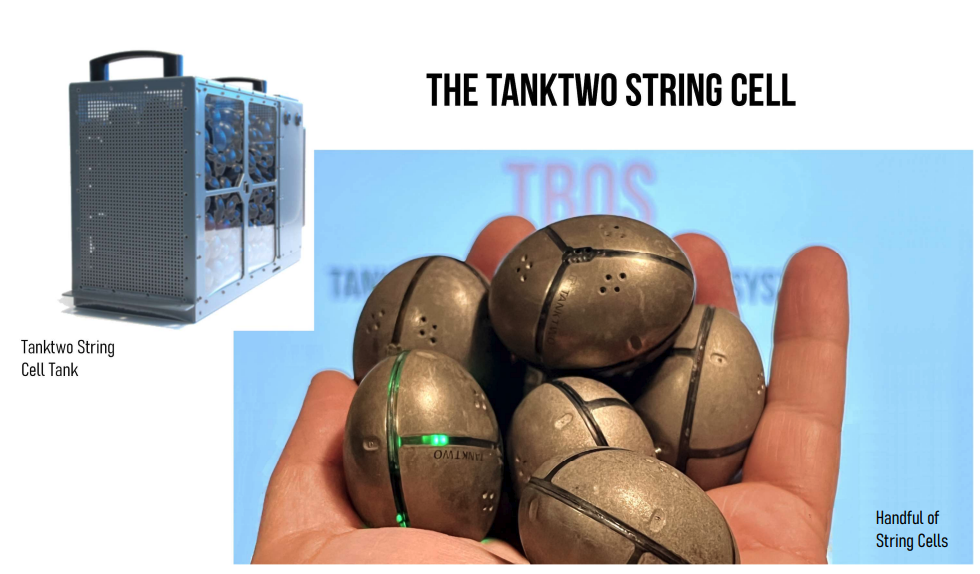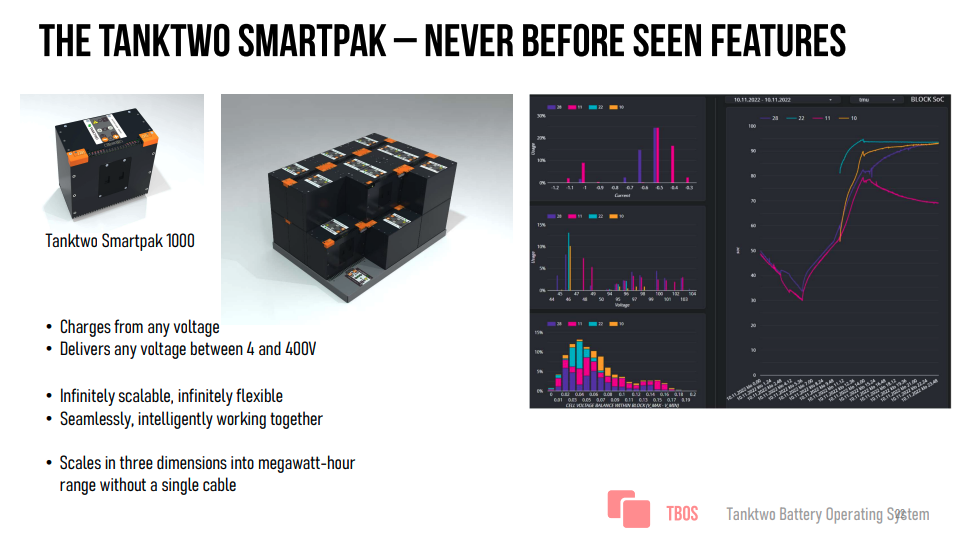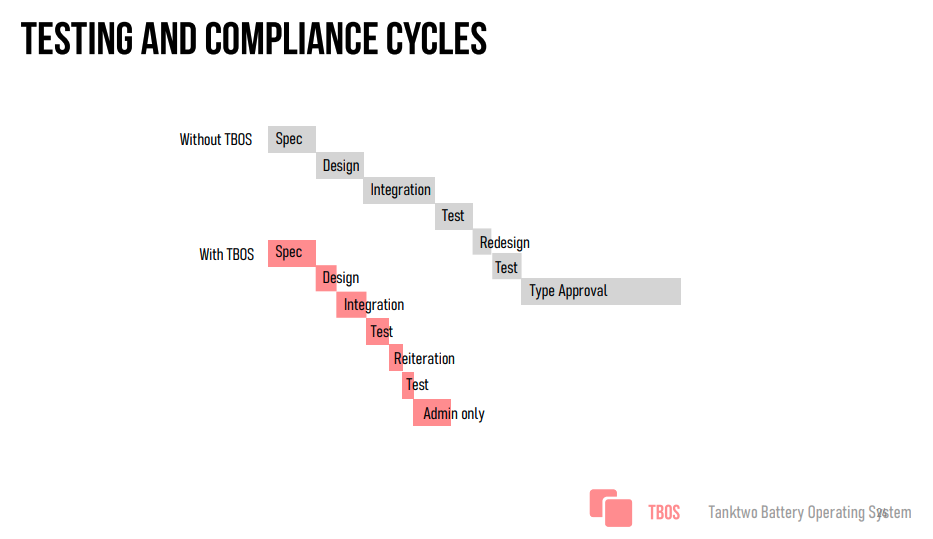How Software-Defined Battery Systems Accelerate Electrification
Software-defined battery management solutions will become the linchpin to realizing the promises and potential of electrification. The Tanktwo Battery Operating System (TBOS) is designed to enable the electrification of commercial and industrial applications at an unprecedented scale.
It’s not a matter of if but when that an operating system for batteries will become the norm. But TBOS isn’t just about the software, which is a means to an end. We provide solutions for the entire battery ecosystem to make electrification the way of the future.
Let’s dig into the nuts and bolts of how our technology delivers the functionality, convenience, and safety that will allow product designers and manufacturers to shorten development cycles and reduce R&D costs to achieve faster time to market and increase profitability.
One core technology, any form factor
TBOS uses the same foundational technology and algorithms for most applications, while the battery pack can be of any size, shape, and form.
The image above shows our iconic string cells. We throw them into a tank of any size, and they touch each other randomly and work together as a battery pack — an absolutely revolutionary way to build batteries. You can add or remove cells to change the battery’s capacity, charge cells inside or outside of a device, and mix cells of varying chemistries or ages.
The above image is the Tanktwo Smartpak, a modular system that works like Lego — you can stack blocks to build a battery pack of any shape or form and almost any capacity without any cable or wiring. Plus, the system is extraordinarily resilient against failure — it still functions perfectly even if cells, blocks, or entire rows cease to function.
Every single Smartpak has configurable output voltage without requiring voltage conversion. This never-seen-before capability enables us to provide a flexible and highly-customization solution to meet any requirement at scale.
Expanding on the capabilities of the Smartpak, we have developed a custom battery solution for a client with very peculiar and hard-to-meet requirements, including the highest possible reliability and the ability to control the cells under extreme circumstances.
“Almost any application…” Really? Really.
What gives us the confidence to say that our battery system can work for any application?
Our system can take in any voltage from any source and output any voltage to any application — no other technology can do that.
Above is one Smartpak unit. You can plug it into a piece of equipment and tell it what voltage you need. If you need 12v, you get 12v. If you need 280v, you get 280v. The output is software-defined — you can reconfigure the battery pack’s architecture to produce the target output voltage with just a few clicks of the mouse.
The battery pack can also charge from any voltage regardless of the set output. Since it doesn't perform voltage conversion for charging or discharging, there’s no efficiency loss. Native voltage support makes our solution universal, scalable, and versatile.
If you need a larger battery, simply stack these blocks together in one, two, or three dimensions. You can build virtually unlimited capacity and scale linearly. You don't need cables for installation, so it’s fast and straightforward to assemble a reliable battery pack for almost any application.
After physically building the pack, you can configure the software-defined batteries through a simple user interface to specify input voltage, output voltage, and any characteristics and behaviors to support the application.
The technology also allows operators to streamline their inventory and lower operating costs. Instead of storing numerous types of battery packs, they only need to stock one basic module and configure the cells on the fly for various applications.
TBOS in action: A battery ecosystem
TBOS and our battery ecosystem are built on our 24 patents.
We offer software, engineering & consulting services, custom-designed solutions, cloud services, and developer kits. The first three are pretty self-explanatory. But what are the last two?
Batteries (lithium) are expensive, and proper management is key to extracting the most value from finite resources. Our cloud-based subscription services help our customers control their battery systems remotely, collect data, and perform predictive analytics to maximize their assets' value during use.
Meanwhile, the developer kits allow prospects and customers to evaluate our technology before committing to this radically new way of building batteries. It’s a “show, don’t just tell” way to provide proof of concept, build credibility, and let the product, not the sales rep, do the selling.
Moreover, our customers can use both our hardware and software or layer our software on their own battery packs. Our design and consulting services can provide the support they need to ensure seamless integration.
Last but not least, the plug-and-play system streamlines testing and compliance.
Most people are familiar with the concept of API and buy vs. build. Our battery ecosystem works somewhat like a microservice in the sense that our customers get access to configurable, tested, and certified building blocks so they don’t have to start their testing and compliance process from scratch.
The API-like system allows product manufacturers to build faster with unprecedented flexibility and established safety features while reducing administrative overhead. The lower costs, reduced risks, and faster time to market can help them gain a competitive edge, become market leaders, and increase profitability.
TBOS: Enabler of electrification at an unprecedented scale
Software-defined power management technology is the bedrock on which the future of electrification is built. TBOS gives product builders the ability to select the functionalities they need for various applications, at the degree they need them, without lengthy and costly R&D.
As a result, more electrified applications can reach the market faster and cheaper to realize the promises and potential of electrification at scale.




